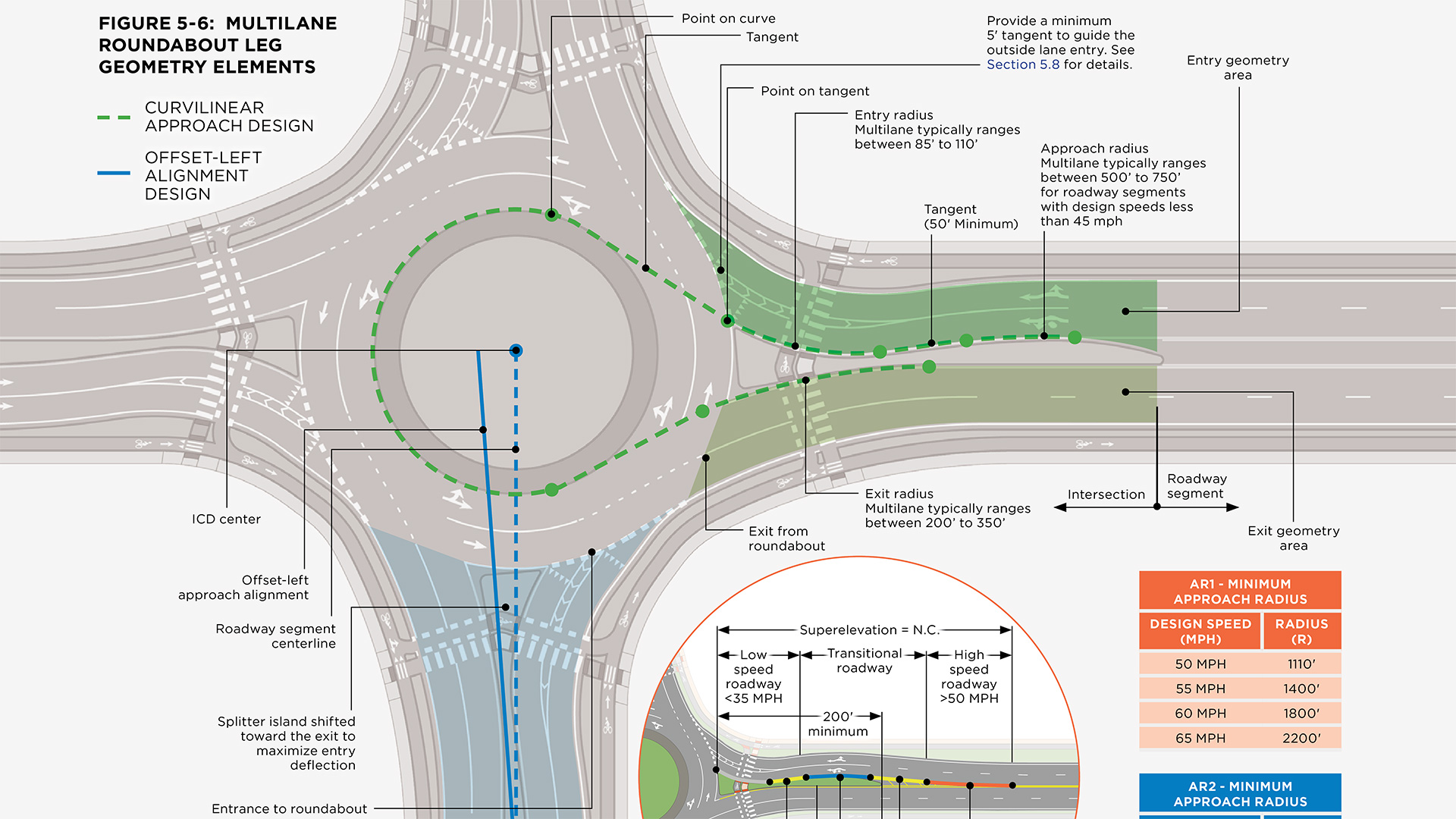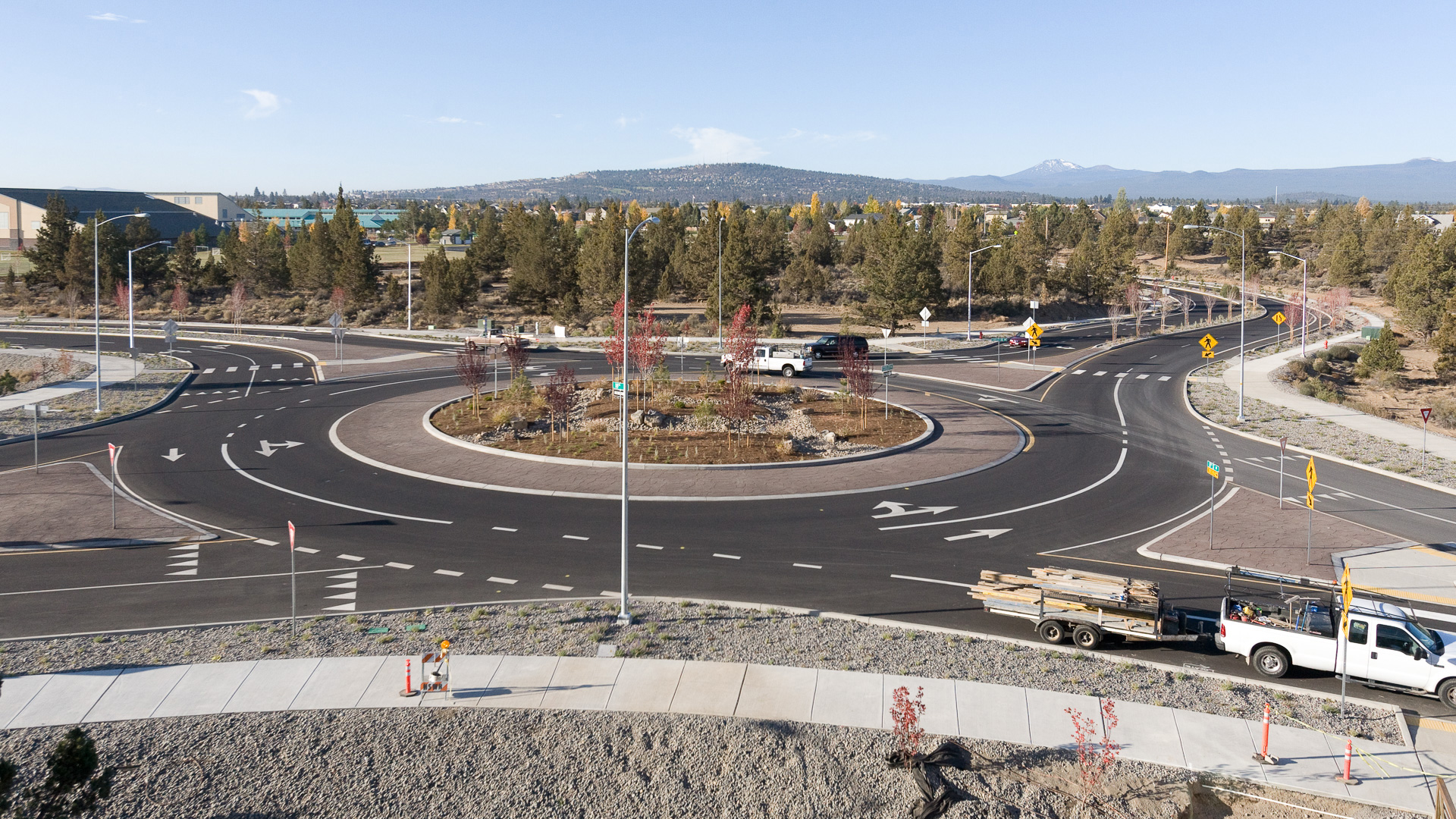Challenge
Various intersection control evaluation processes and metrics are used by agencies for evaluating intersection geometry and control alternatives and identifying an optimal geometric and control solution for an intersection. These processes usually address safety, operational, multimodal, environmental, right-of-way, cost, and other considerations. However, there was no widely accepted procedure or guide for evaluating new intersections or modifications to an intersection.
Solution
A Kittelson team led an NCHRP project to develop a national intersection control evaluation guide that compiles best practices and proposes processes and tools for evaluating intersection control alternatives. The guide provides the fundamentals on intersection control evaluation, describes a typical intersection control evaluation process, offers an eight-step framework for implementing a new intersection control evaluation process, and provides practical detail about intersection forms, control types, analysis methods, and analysis tools. Along with the guide, our team created or updated nine spreadsheet tools that practitioners can use as they perform intersection control evaluation evaluations and analyses.
The Outcome
A Roadmap for Rolling Out Statewide Intersection Control Evaluation Policies
NCHRP Research Report 1087: Guide for Intersection Control Evaluation aims to bring consistency to intersection control evaluation processes and chart a clear path for states that have not yet developed an intersection control evaluation process. It also, because it includes a good deal of new research and methods, is a valuable resource for states that already have intersection control evaluation processes, as well as local agencies that are also called upon to evaluate intersections holistically and equitably. The guide will help practitioners make decisions regarding intersection type and control, while implementing safer and more cost-effective solutions.



